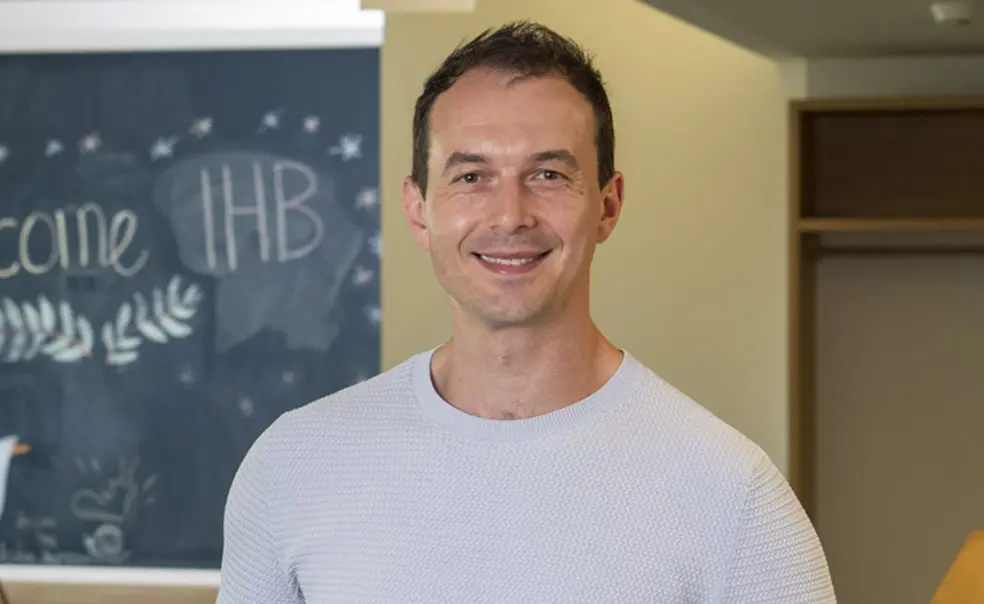Nikolche Gjorevski *12 Is Building Organoids for Biomedical Research
‘We’re interested in using these structures to study human biology and human disease’
Only 10 percent of all the drugs tested in animals become approved for humans, notes Nikolche Gjorevski *12, who received his Ph.D. in chemical engineering from Princeton. “And that’s kind of accepted, because we previously couldn’t do better,” he says. “But think of any other model or tool in your life, let’s say your phone or computer. Would you be OK if it worked 10% of the time? Probably not.”
As the senior group leader at the Roche Institute of Human Biology, Gjorevski directs a research group that’s become a global leader in technology that could revolutionize not only drug development, but all of biomedical research. He and his team are building organoids — miniature, three-dimensional clusters of cells that mimic the key functions of individual organs, such as how they grow, contract disease, and respond to drugs. Because they’re derived from human stem cells and somewhat resemble the shapes and composition of human organs, organoids are a more accurate model for human biology than animals and traditional, two-dimensional plates of lab-grown cells.
“Organoids give us the best data and insights into human-specific mechanisms of biology, disease and responses to drugs, short of actually testing them in humans,” Gjorevski says.
His research group primarily focuses on intestinal organoids. They’re useful for studying the nature of, and possible interventions for, intestinal disorders like inflammatory bowel disease and colorectal cancer, and for predicting a drug’s side effects on healthy intestine.
The basic strategy for building an organoid, explains Gjorevski, involves growing a liquid mixture of cells in a precisely-shaped mold, similar to creating a sculpture by casting molten metal.
“We allow these cells to solidify, to form junctions with each other and the surrounding medium, and then they form a tissue that essentially conforms to the size and shape of the original mold that we provided,” Gjorevski says.
In pursuing this research, Gjorevski draws from the worlds of physics and engineering by studying the mechanical forces acting on an organ and its material properties that allow it to bend and fold into the right configuration during development. It’s an interdisciplinary approach to biology he learned in his time at Princeton. His doctoral adviser, Celeste Nelson, unites biology and engineering to study how cells organize into branching networks of tubes that eventually form organs like the lungs, kidneys, and mammary glands.
“Those five years I spent at Princeton and in Celeste’s lab were extremely formative because I developed the basic kind of toolbox for how I approach science there,” Gjorevski says.
Organoids are still a relatively new technology, and it might be some time before they make a significant impact on human health. “I think we’re definitely in the development, ‘figuring it out’ phase,” of organoid research, Gjorevski says.
But whenever he and his team do end up figuring it out, Gjorevski says he can thank his experiences as a Ph.D. student.
“The technologies that we’re developing are very much rooted in what I did at Princeton,” he says.











No responses yet